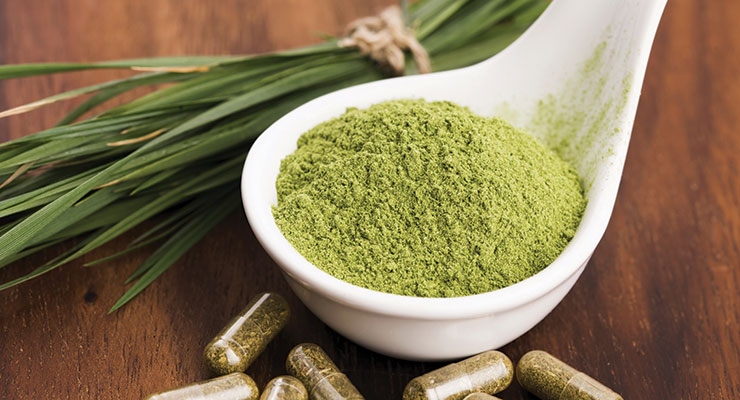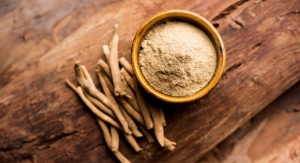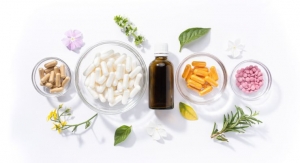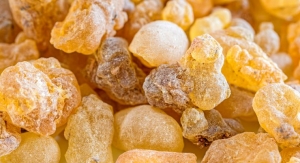By Danielle Rose, Contributing Writer07.05.17
When the New York Attorney General demanded several big chain stores remove herbal supplements from their shelves in 2015 after questionable testing analysis, no one knew exactly what the long-term implications would be for the herb and botanical industry. Collective pushback to this bad press from manufacturers and suppliers included educating industry and consumers, understanding different testing methods, as well as quality control measures, and supply chain reviews. More than two years later, what effect have these efforts had?
Truth be told, the landscape of the herb and botanical market has changed quite a bit since then. For example, quality control has become a central focus for both the industry and educated consumers who want to know the origins of the products they buy. In fact, consumers today are more confident in their options, helping to drive the market in positive directions.
Understanding the Landscape
Growth in the herbal products market appears to be most prominent, “Where there are clinical evidences, long history of use, and health benefits which cater to the changing health needs of the population,” according to Anurag Pande, PhD, vice president of scientific affairs at Sabinsa, East Windsor, NJ. “We think this growth has paralleled with increasing awareness of consumers about the brands, their origin, and more transparency about the product itself.”
Repeat business is confirmation that consumers are confident in the safety and efficacy of their herbal supplements. George Pontiakos, president and CEO of BI Nutraceuticals, Rancho Dominguez, CA, doesn’t believe the $7 billion industry would have continued to grow if the consumer had lost confidence.
Timothee Olagne, director of marketing and business development, Nutrition & Health, Naturex, Hackensack, NJ, said the most dynamic channels are those that enable direct dialogue with customers (e.g., multilevel marketing, and healthcare practitioners). Consumers are looking to interact with their brands, in person and via the Internet. People are seeking places where they can share their issues and learn more, and Mr. Olagne believes this is becoming increasingly important as the population becomes more educated about health and their options. “Consumers want to know where their supplement is from, and why it’s good for them,” he said.
In general, many consumers are increasingly interested in more natural, less processed products, noted Duffy MacKay, ND, senior vice president of scientific and regulatory affairs, Council for Responsible Nutrition (CRN), Washington, D.C. “Herbs and botanicals fit nicely into that.”
Additionally, Mr. Olagne said today’s herbal products market crosses barriers of age and economic status, as consumers are more willing to spend a little extra to get products they perceive to offer added value.
“We are seeing people at all ages and stages in their lives using botanical products,” said Ramon Luna, marketing coordinator, Ecuadorian Rainforest, Belleville, NJ. “Millennials who are more health conscious are looking for products for general health upkeep that are convenient. Those well into adulthood are looking for natural products to keep them healthy even into their elderly years.”
Data provided by the American Herbal Products Association (AHPA), Silver Spring, MD, indicated Millennials (broadly defined as those born between 1980 and the mid-1990s) are driving industry growth with products that address headaches, anxiety, stress, mood, detoxification, and sports performance and recovery. Older consumers, on the other hand, maintain a strong presence in the market as well, seeking weight loss for health, and supplements to aid with menopausal issues, sexual dysfunction, asthma, as well as sports performance and recovery.
As research reveals health benefits for different target markets, the opportunity to reach a variety of demographics has blossomed. For example, products that were originally intended to improve geriatric health and memory are now also being used to support children with ADHD. Sports nutrition is of interest to everyone from athletic professionals to casual athletes, covering a wide range of ages. According to Sabinsa’s Mr. Pande, the product ForsLean (Coleus forskohlii)—known for weight loss and management, also has applications for meal replacement and sports nutrition.
“Demographics are changing,” Mr. Pande noted. “We have aging baby boomers with health requirements different from those of millennials. Joint health, digestive health, and cognitive health are of major concern to the aging population.”
Trends & Challenges
Consumers demand trust and comfort, and many of today’s most prominent trends revolve around those concepts—for example, functional foods offering organic whole-plant options, and supplements made from familiar botanicals.
In the 1990s, when herbs like echinacea and St. John’s wort were rising in popularity and being scrutinized for lack of clinical research on their safety and efficacy, FutureCeuticals, Momence, IL, saw the benefit of focusing on fruits and vegetables. From a consumer perspective, fruits and vegetables are not only safe, but they are familiar. Hartley Pond, senior vice president of FutureCeuticals, said that many manufacturers and suppliers today are seeing consumers revert back to food as a source of both nutrition and medicine.
For example, according to Mr. Olagne, Naturex’s best sellers are not the newest and hottest items available, but those that are more familiar to everyday consumers. Cranberry, turmeric, and ginger are reputable botanicals that can be found in any supermarket, yet have been top players in the medicinal market for many years.
Culinary Medicine
The health benefit of adding herbs and spices to the diet is also gaining traction in the nutritional market. CRN’s Dr. MacKay said that even cooking class instructors tout the medicinal benefit of certain herbs (e.g., the anti-inflammatory properties of turmeric).
“There is a rediscovery of culinary herbs,” according to Mr. Pond. “We see that as a growing field—these staples of the culinary world having interest for their medicinal uses … and people who want to incorporate culinary herbs into their cooking for medicinal uses.”
He noted that FutureCeuticals’ parent company began as an herb farm in the 19th century, saying there is much to be said for the Native American and early American-European settlers’ traditions of herbs and medicine. Although Traditional Chinese Medicine and Ayurvedic medicine of India have carved the current herb and botanical landscape, Mr. Pond pointed out that Americans have their own rich tradition of using herbs like basil, green onions, and cilantro for medicinal purposes. The use of culinary herbs as medicine allows consumers to choose options that are not only familiar, but fit with their own personal traditions and interests.
Functional, Whole Food Nutrition
Functional foods and beverages are another aspect of this growing market—particularly for the average consumer who can find ease and frugality in blending nutrition, medicine, and prevention in one healthy and belly-filling shake, bar, or beverage.
When it comes to shakes and meal replacements, fruit and vegetable ingredients are gaining traction. Dr. MacKay said consumers are seeking more than just a magic ingredient that can help with weight loss or muscle recovery, for example, but rather supplements that will complement an overall nutrition plan.
Ultimately, whether through beverages, bars, or food powders, Mr. Olagne said consumers are straying from capsules, and seeking more whole food formulations with natural colors and fibers that offer all of the botanical’s constituents in a way that is relatable.
Consumers are also seeking less purified, whole-food ingredients in an effort to get their nutrition as naturally as possible, Dr. MacKay said. According to Mr. Pond, there is a trend toward buying organic, and purchasing products that are minimally processed in a way that does not alter or harm the natural properties of the food or herb. Consumers want to know that there are no additives, and that they are getting the whole food—not just constituents of it. Not only that, but they also want to know they are getting a full serving of a fruit or vegetable in their functional products.
“The ability to actually quantify how much you are consuming in a product is of great interest,” Mr. Pond said. “If you know you’re getting a full serving of a green, and a half serving of fruit, people will drink it.”
Delivery Options
Even consumers who prefer a daily supplement are seeking different delivery options to increase the ease of taking their nutritional prodcuts. Whether through stick packs, gummies, or continual improvements in water solubility, BI Nutraceuticals’ Mr. Pontiakos said innovation and engineering is essential to getting the right dose into an increasingly food-based market.
On the other end of the spectrum, Tom McMahon, North American sales manager for Switzerland-based Linnea, does not discount the trend for all-natural cosmetic ingredients that offer botanical absorption through the skin.
Local & Traceable
Another aspect of safety, trust, and comfort is the trend toward American-made products and locally grown organic foods. FutureCeuticals’ Mr. Pond said consumers want to know their product was grown, raised and processed in the U.S., and that it is “clean”—grown in non-contaminated soil with clean air and water. This trend is widespread enough to be seen in large retail outlets such as Walmart and Costco.
“The consumer is so much more savvy,” Mr. Pond noted. “They want to be able to trace it back, and what happened to it? How did it get from being fresh to being a dried powder?”
Cost does not seem to be a driving factor in this regard, either. “When people realize there’s a choice between having a U.S. or offshore product, they are willing to pay a higher price,” he said. “Often, organic products in the U.S. are a little more expensive, but if people understand and believe in it, they are willing to pay. It’s about introducing the choice, and we’re just beginning to do that.”
Market Challenges
In addition to locally grown, consumers are demanding more sustainability from their products. However, the demand for traceability means suppliers need to oversee every aspect of the supply chain and focus on quality and fair trade over price.
“One has to understand that medicinal plant agriculture in India is not as lucrative or profitable as some other crops,” said Sabinsa’s Mr. Pande. “As a result, we believe there is a strong requirement for securing the interests of the farming community.”
Quality control is not the only concern affecting product growth. Mother nature still has a strong hand in that department, Mr. Pontiakos said, since the supplement market is just as susceptible to adverse weather conditions as food growers. FutureCeuticals mitigates this while maintaining its American-grown status by taking advantage of the wide array of climates in the U.S. and expanding farms to southern California for year-round growing.
Wild-crafted ingredients have their own unique supply issues. For example, Mr. Pontiakos said BI holds permits to harvest wild bark and roots in the same areas sanctioned for growing marijuana. That means ensuring law enforcement for these areas know that harvesting is happening, and it also means finding alternative labor sources, as itinerant laborers may fear being deported.
Currency & Political Landscape
Whether purchasing in North America, Asia, or Europe, a strong dollar goes a lot farther than a weak one. Mr. Pontiakos said there are some locations, such as Venezuela, where it is all but impossible to bring crops back to the U.S., and it can be quite expensive to get product from Mexico and Canada. However, many of these products, such as aloe, can now be grown just as inexpensively in the southern U.S., avoiding the need to go outside the country.
Mr. McMahon said the biggest challenge Linnea sees is competition with low prices in the Asian market. Although the quality of their product is improving, certain Asian companies are not doing the same testing or clinical trials as U.S.-based companies, resulting in lower-quality product at a lower price.
On the other hand, Deanne Dolnick, science director, TR Nutritionals, Alpharetta, GA, said stricter environmental policies by the Chinese government have led to extraordinary price increases that could affect the consumer and sales. This only exacerbates the ongoing concern about economically motivated adulteration.
“While the market has shown very positive growth in recent times, especially in regards to certain herbs, it also increased cases of economically motivated adulteration,” said Mr. Pande. “Curcumin is a great example; its success in the dietary supplement industry was, predictably, followed by its adulteration.”
Mr. Pande said the industry has the ability to make information available that can mitigate and change the perception of today’s consumer. “Using various media, newsletters, radio talk shows, interviews, and speaking opportunities we are trying to educate the consumers, industry players, and industry associations of the problem we face from adulteration,” Mr. Pande said. “But the problem of economically motivated adulteration will not subside unless the industry stands up against this as a united front.”
Mr. Pontiakos agreed that the industry could benefit from more positive self-promotion that touts the strides that have been made, informs consumers that people are still taking supplements, and that doctors recommend them. When the industry can better inform the press of the standards and expectations, then the press can better validate the industry’s progress and consumer benefit. Trusted resources or celebrities aid this endeavor, as well as create market demand that didn’t exist before.
“We have a handful of celebrities who have embraced herbal products and natural medicine that are helping spread awareness,” said Dr. MacKay. “The industry itself (the American Botanical Council, CRN, etc.) is constantly putting out good information on how to incorporate herbs and botanicals into your life.”
On the flip side, this growth can lead back to more adulteration challenges. Increased market demand means an influx of cheap and adulterated raw material, Mr. Pande noted. This is where good quality control and testing become essential to ensuring a product is the cleanest, safest, and most effective it can be.
“Consumer trust is fickle, hard to earn, and even harder to win back once betrayed,” said Ecuadorian Rainforest’s Mr. Luna. “The biggest challenges facing the botanical industry today are adulteration and misinformation. Though different, both have the same result, which is a loss of public trust.”
“Education is key,” added Mr. Pande. “Consumers need to be educated, and a great number of consumers are looking for answers to differentiate or understand what product is best valued for them.”
Adulteration & Supply Chain Management
Regulations for the dietary supplement industry vary from country to country and, according to Naturex’s Mr. Olagne, self-regulation is an important element of quality control that allows manufacturers selling in the U.S. a large degree of flexibility. “It is this unevenness in regulatory harmony which makes the parallel industry self-regulation initiatives so important. They protect and inform consumers and proactively ensure compliancy.”
“There is continued concern regarding adulterated botanicals,” said Ms. Dolnick. “This is developing into a larger problem as many companies are becoming more driven by purchasing the least expensive raw materials.”
Through its relationship with its Indian extract manufacturer, TR Nutritionals has learned that many manufacturers are adding synthetic material to their turmeric extracts, or producing a 100% synthetic product in order to increase their profit margin and offer a lower price—and this is only one example of the adulteration problem.
“We know that we’ve lost business because other suppliers are selling cheap and adulterated material,” Ms. Dolnick acknowledged. “We’ve actually seen fraudulent Certificates of Analyses produced by suppliers and given to their customers.”
On the other hand, Mr. Pontiakos said adulteration should never be a concern for a company that has an eye on all aspects of its production. “If you are not extending your quality organization into the field, you have a business model that is going to fail, particularly with adulteration,” he said.
Although there has been an increased focus on product testing, quality control measures are at the heart of avoiding adulteration issues. When the chain of custody—from planting, to the customer’s receiving dock—is uninterrupted, Mr. Pontiakos said quality control is not an issue. Manufacturers need to ensure their focus is on the raw materials side versus the marketing end. Additionally, he said procurement and quality control teams should have separate goals and evaluations, while maintaining open communication and organization between the two to avoid unnecessary contention.
“A good quality control professional can go in and make an assessment of your supply chain and tell you very quickly whether you have a problem or discrepancy,” Mr. Pontiakos said. “There’s zero excuse for that not to occur.”
Another aspect of a strong quality control program means clearly stating what you are offering, and then providing the proper tests to confirm your claims, according to Mr. McMahon. Working with organizations, agencies, and having a voice at trade shows gives consumers confidence in your company and in your product.
Because of its strict quality control protocols, Linnea didn’t need to do much mitigation after the attorney general concern. Mr. McMahon said customer confidence is strongest where the company has control over all parts of the process, and full traceability.
Mr. Olagne said the first step to quality control is being able to trace the product back to its roots. Manufacturers should know their supplier and know where the product comes from. Tests should be used to confirm what a company already knows. The second step is storytelling—being able to walk the customer through the supply chain for their product. Manufacturers should be asking where the product was grown, where the seeds came from, who harvested it and how—and have these answers at the ready.
“The thing that will protect you [from adulteration] is knowing that who you are buying from has their act together,” Mr. Pontiakos said. “There is no line you can defend. It all starts with the ethical professionalism from the people you are buying from.”
Testing: Fit for Purpose
Testing, however, is necessary to confirm to the industry and the consumer that you are, in fact, selling what you say you are. The trick is to find the right test for the right product.
“One test will tell you only part of the story,” Mr. Olagne said. “It almost doesn’t matter what method is used as long as it’s appropriate to the product you’re testing, and as long as you’re using multiple methods.”
In testing an herb such as turmeric, Mr. Olgane said that a DNA analysis will confirm that it is, in fact, turmeric. However, additional tests are needed to determine if (for example) it’s the right strain of turmeric, that the correct part of the plant is being used, and that there are no added compounds.
Test results should ultimately include information regarding the identification, purity, and potency of the plant, as well as whether the final product was substituted, contaminated, or spiked. Tests also ensure the products meet GMPs, local, and national legislation compliance, certification verification, as well as quality control, and performance monitoring and audit protocols.
One of the issues with testing for adulteration is that it requires an understanding of what might be contaminating the pure herb or botanical, said Dr. MacKay.
“A good testing program is not just about confirming what’s expected in the product, but also being capable of finding the unexpected,” Mr. Pande said. “There is no single system which covers every testing need, but use of different, yet complementary technologies can be a better option.”
DNA testing has received a great deal of attention in recent years, but as most people in the industry know, it isn’t the end-all-be-all of product testing.
“[DNA testing] is a new methodology in this industry,” said Mr. Pontiakos. “There’s not a library for the vast amount of properties out there, and DNA is a singular metric, not all-encompassing.”
DNA testing cannot tell if the right part of the plant is being used, if the raw material is high quality, if the extract contains the target compounds, or if there are any contaminants or synthetics. All of these conditions need to be determined as the plant is grown, harvested, and processed. Additionally, in order for DNA testing to work, the plant itself needs to exist in a formal register, and have not been overly processed, which leaves less DNA available to test.
“A good chemical test should be robust and routine to identify any possible deviation in quality, actives, and presence of adulterant,” Mr. Pande said. “However, chemical analysis may not be able to give a complete picture of origin of the product. This is where the DNA technology may be useful when used appropriately. However, the chain of custody needs to be maintained to be able to trace the origin of raw material of the extract.”
Telling the Story
Experts agreed that more important than testing alone is supply chain quality control. Since not all tests are effective or pertinent for every plant/product, knowing the details of what is happening at all stages of growth, harvesting, and processing, provides cues on when and what to test for to ensure compliance and efficacy of the product.
“Today, consumers demand access to this information too,” according to Mr. Olgane. “And it is gradually becoming a market differentiator—a trend that will only increase as transparency becomes more prevalent across other industries and services.”
He warned that labeling is not enough to stand out among the sea of competing products and information overkill. Each product needs to have its own story in words and images that share the ingredient’s lifestyle, heritage, scientific backing, and the manufacturing process.
“A botanical ingredient is only as good as its origin and initial treatment: where and how it was grown, harvested, and processed or extracted,” said Mr. Olgane. “Manufacturers are the most closely involved with the raw material cultivator and thus are the most able to ensure full traceability, verifying and documenting the essential information on a plant’s identity and properties.”
Ultimately, chain of custody and storytelling are the most important aspects of any testing, analysis, and quality control issue. For example, TR Nutritionals builds strong relationships with its raw material suppliers, maintaining long-term relationships with trusted partners, and visiting/ auditing suppliers on a regular basis as part of its Vendor Qualification Program.
“Having these long-term relationships where the manufacturers are meeting with the executives of TR is invaluable and we believe the only way to do business,” Ms. Dolnick said.
Mr. Olgane said transparency was one of the biggest consumer issues with the NY attorney general’s concerns, which is why being able to clearly and cleanly explain to the customer where the product came from—seed to harvest to processing—is so important in today’s market.
“[Consumers want] a better understanding of where the ingredient comes from, making sure ingredients are clean, and that the label is easy to understand,” Mr. Olgane said. “They want to understand what’s in the bottle, and that it’s really good for them.”
Companies should understand that their brand is being tested every time someone takes their product. Compliance and safety are paramount, even if it comes at an additional cost.
What’s Hot?
What are the up-and-coming contenders in the herbal products marketplace?
SPINS data show horehound has the largest market share by dollar amount in 2017 with over $130 million in sales, followed only by Chinese herbs ($90 million), echinacea ($84 million, with a 29% increase in sales last year) and turmeric ($75 million, with more than a 40% increase in sales over the past year).
Data also show sassafras, rosehips, and oat straw are rising rapidly in rank.
Meanwhile, in 2016 the Natural Marketing Institute reported that turmeric, ashwagandha, and horny goat weed led the list of single-ingredient herbal supplement sales on Amazon.com.
CRN’s Dr. MacKay said the most promising herbs and botanicals right now are the “legacy” herbs that have earned their reputations. For example, he pointed to green tea for its antioxidant properties, cranberry for UTI and bacteria prevention, garlic for cardiovascular health, and ginseng, as being the biggest contenders in today’s market.
“They’ve earned their reputation and maintained their position due to good science,” Dr MacKay said. “And they do work. People see the results, so they stick with them.”
He also added curcumin/turmeric to the list, as new studies on how it works in the body have made way for growth via new products that have risen from that interest.
Sabinsa has found that new scientific findings play a large part in the growth of many herbs and botanicals. The company recently published new research on Curcumin C3 Reduct that discusses the chemistry, pharmacology, preclinical, clinical, and safety profile of tetrahydrocurcuminoids, as well as its role in cosmeceuticals and nutricosmetics.
“Recent research has uncovered that the tetrahydrocurcuminoids are in fact superior antioxidants than curcuminoids themselves,” Mr. Pande said. “In addition, tetrahydrocurcuminoids possess an interesting array of pharmacological activities that accord them a separate status for being considered for their health-promoting properties.”
Sabinsa has also seen increased demand for Boswellin Boswellia serrata, a lipoxygenase inhibitor for managing joint health, and BioPerine black pepper extract for bioavailability enhancement. Finally, the company reported growing popularity for pterocarpus extract, derived from Pterocarpus tree heart wood, which may have anti-aging properties and help manage blood sugar.
Mr. Pontiakos said fiber-based proteins are gaining traction in the market. Other promising contenders include saw palmetto and cascara bark for women’s health.
Mr. McMahon said Linnea is seeing growth in ginkgo biloba and other supplements that fit in the “brain food” category—as stress and mental acuity are important factors for consumers of all ages.
Naturex has seen interest in devil’s claw for anti-inflammation, and elderberry and maca for immunity. Within its own product lines, naturally-sourced options for traditionally synthetic supplements, such as acerola-sourced vitamin C, are also in demand.
Ecuadorian Rainforest has found a resurgence with maqui berry, particularly in southeast Asia, according to the company’s Mr. Luna. He attributed this to the growing desire for antioxidant, omega-rich options for an aging population.
Meanwhile, TR Nutritionals has seen continued growth in sales of methylcobalamin, pyridoxal-5-phosphate, ginkgo biloba, turmeric, and resveratrol, to name a few.
On the nutritional/medicinal food and culinary end, FutureCeuticals has noticed a strong trend for green leafy and cruciferous vegetables, most notably kale, but also spinach, broccoli and their sprouts.
Ultimately, today’s herbal products market is continually growing, and consumers of varying backgrounds are buying in. Whether a traditional supplement, tea/functional beverage, or unique extract, products today help create a diverse and dynamic landscape that provides consumers with more options than ever before.
Truth be told, the landscape of the herb and botanical market has changed quite a bit since then. For example, quality control has become a central focus for both the industry and educated consumers who want to know the origins of the products they buy. In fact, consumers today are more confident in their options, helping to drive the market in positive directions.
Understanding the Landscape
Growth in the herbal products market appears to be most prominent, “Where there are clinical evidences, long history of use, and health benefits which cater to the changing health needs of the population,” according to Anurag Pande, PhD, vice president of scientific affairs at Sabinsa, East Windsor, NJ. “We think this growth has paralleled with increasing awareness of consumers about the brands, their origin, and more transparency about the product itself.”
Repeat business is confirmation that consumers are confident in the safety and efficacy of their herbal supplements. George Pontiakos, president and CEO of BI Nutraceuticals, Rancho Dominguez, CA, doesn’t believe the $7 billion industry would have continued to grow if the consumer had lost confidence.
Timothee Olagne, director of marketing and business development, Nutrition & Health, Naturex, Hackensack, NJ, said the most dynamic channels are those that enable direct dialogue with customers (e.g., multilevel marketing, and healthcare practitioners). Consumers are looking to interact with their brands, in person and via the Internet. People are seeking places where they can share their issues and learn more, and Mr. Olagne believes this is becoming increasingly important as the population becomes more educated about health and their options. “Consumers want to know where their supplement is from, and why it’s good for them,” he said.
In general, many consumers are increasingly interested in more natural, less processed products, noted Duffy MacKay, ND, senior vice president of scientific and regulatory affairs, Council for Responsible Nutrition (CRN), Washington, D.C. “Herbs and botanicals fit nicely into that.”
Additionally, Mr. Olagne said today’s herbal products market crosses barriers of age and economic status, as consumers are more willing to spend a little extra to get products they perceive to offer added value.
“We are seeing people at all ages and stages in their lives using botanical products,” said Ramon Luna, marketing coordinator, Ecuadorian Rainforest, Belleville, NJ. “Millennials who are more health conscious are looking for products for general health upkeep that are convenient. Those well into adulthood are looking for natural products to keep them healthy even into their elderly years.”
Data provided by the American Herbal Products Association (AHPA), Silver Spring, MD, indicated Millennials (broadly defined as those born between 1980 and the mid-1990s) are driving industry growth with products that address headaches, anxiety, stress, mood, detoxification, and sports performance and recovery. Older consumers, on the other hand, maintain a strong presence in the market as well, seeking weight loss for health, and supplements to aid with menopausal issues, sexual dysfunction, asthma, as well as sports performance and recovery.
As research reveals health benefits for different target markets, the opportunity to reach a variety of demographics has blossomed. For example, products that were originally intended to improve geriatric health and memory are now also being used to support children with ADHD. Sports nutrition is of interest to everyone from athletic professionals to casual athletes, covering a wide range of ages. According to Sabinsa’s Mr. Pande, the product ForsLean (Coleus forskohlii)—known for weight loss and management, also has applications for meal replacement and sports nutrition.
“Demographics are changing,” Mr. Pande noted. “We have aging baby boomers with health requirements different from those of millennials. Joint health, digestive health, and cognitive health are of major concern to the aging population.”
Trends & Challenges
Consumers demand trust and comfort, and many of today’s most prominent trends revolve around those concepts—for example, functional foods offering organic whole-plant options, and supplements made from familiar botanicals.
In the 1990s, when herbs like echinacea and St. John’s wort were rising in popularity and being scrutinized for lack of clinical research on their safety and efficacy, FutureCeuticals, Momence, IL, saw the benefit of focusing on fruits and vegetables. From a consumer perspective, fruits and vegetables are not only safe, but they are familiar. Hartley Pond, senior vice president of FutureCeuticals, said that many manufacturers and suppliers today are seeing consumers revert back to food as a source of both nutrition and medicine.
For example, according to Mr. Olagne, Naturex’s best sellers are not the newest and hottest items available, but those that are more familiar to everyday consumers. Cranberry, turmeric, and ginger are reputable botanicals that can be found in any supermarket, yet have been top players in the medicinal market for many years.
Culinary Medicine
The health benefit of adding herbs and spices to the diet is also gaining traction in the nutritional market. CRN’s Dr. MacKay said that even cooking class instructors tout the medicinal benefit of certain herbs (e.g., the anti-inflammatory properties of turmeric).
“There is a rediscovery of culinary herbs,” according to Mr. Pond. “We see that as a growing field—these staples of the culinary world having interest for their medicinal uses … and people who want to incorporate culinary herbs into their cooking for medicinal uses.”
He noted that FutureCeuticals’ parent company began as an herb farm in the 19th century, saying there is much to be said for the Native American and early American-European settlers’ traditions of herbs and medicine. Although Traditional Chinese Medicine and Ayurvedic medicine of India have carved the current herb and botanical landscape, Mr. Pond pointed out that Americans have their own rich tradition of using herbs like basil, green onions, and cilantro for medicinal purposes. The use of culinary herbs as medicine allows consumers to choose options that are not only familiar, but fit with their own personal traditions and interests.
Functional, Whole Food Nutrition
Functional foods and beverages are another aspect of this growing market—particularly for the average consumer who can find ease and frugality in blending nutrition, medicine, and prevention in one healthy and belly-filling shake, bar, or beverage.
When it comes to shakes and meal replacements, fruit and vegetable ingredients are gaining traction. Dr. MacKay said consumers are seeking more than just a magic ingredient that can help with weight loss or muscle recovery, for example, but rather supplements that will complement an overall nutrition plan.
Ultimately, whether through beverages, bars, or food powders, Mr. Olagne said consumers are straying from capsules, and seeking more whole food formulations with natural colors and fibers that offer all of the botanical’s constituents in a way that is relatable.
Consumers are also seeking less purified, whole-food ingredients in an effort to get their nutrition as naturally as possible, Dr. MacKay said. According to Mr. Pond, there is a trend toward buying organic, and purchasing products that are minimally processed in a way that does not alter or harm the natural properties of the food or herb. Consumers want to know that there are no additives, and that they are getting the whole food—not just constituents of it. Not only that, but they also want to know they are getting a full serving of a fruit or vegetable in their functional products.
“The ability to actually quantify how much you are consuming in a product is of great interest,” Mr. Pond said. “If you know you’re getting a full serving of a green, and a half serving of fruit, people will drink it.”
Delivery Options
Even consumers who prefer a daily supplement are seeking different delivery options to increase the ease of taking their nutritional prodcuts. Whether through stick packs, gummies, or continual improvements in water solubility, BI Nutraceuticals’ Mr. Pontiakos said innovation and engineering is essential to getting the right dose into an increasingly food-based market.
On the other end of the spectrum, Tom McMahon, North American sales manager for Switzerland-based Linnea, does not discount the trend for all-natural cosmetic ingredients that offer botanical absorption through the skin.
Local & Traceable
Another aspect of safety, trust, and comfort is the trend toward American-made products and locally grown organic foods. FutureCeuticals’ Mr. Pond said consumers want to know their product was grown, raised and processed in the U.S., and that it is “clean”—grown in non-contaminated soil with clean air and water. This trend is widespread enough to be seen in large retail outlets such as Walmart and Costco.
“The consumer is so much more savvy,” Mr. Pond noted. “They want to be able to trace it back, and what happened to it? How did it get from being fresh to being a dried powder?”
Cost does not seem to be a driving factor in this regard, either. “When people realize there’s a choice between having a U.S. or offshore product, they are willing to pay a higher price,” he said. “Often, organic products in the U.S. are a little more expensive, but if people understand and believe in it, they are willing to pay. It’s about introducing the choice, and we’re just beginning to do that.”
Market Challenges
In addition to locally grown, consumers are demanding more sustainability from their products. However, the demand for traceability means suppliers need to oversee every aspect of the supply chain and focus on quality and fair trade over price.
“One has to understand that medicinal plant agriculture in India is not as lucrative or profitable as some other crops,” said Sabinsa’s Mr. Pande. “As a result, we believe there is a strong requirement for securing the interests of the farming community.”
Quality control is not the only concern affecting product growth. Mother nature still has a strong hand in that department, Mr. Pontiakos said, since the supplement market is just as susceptible to adverse weather conditions as food growers. FutureCeuticals mitigates this while maintaining its American-grown status by taking advantage of the wide array of climates in the U.S. and expanding farms to southern California for year-round growing.
Wild-crafted ingredients have their own unique supply issues. For example, Mr. Pontiakos said BI holds permits to harvest wild bark and roots in the same areas sanctioned for growing marijuana. That means ensuring law enforcement for these areas know that harvesting is happening, and it also means finding alternative labor sources, as itinerant laborers may fear being deported.
Currency & Political Landscape
Whether purchasing in North America, Asia, or Europe, a strong dollar goes a lot farther than a weak one. Mr. Pontiakos said there are some locations, such as Venezuela, where it is all but impossible to bring crops back to the U.S., and it can be quite expensive to get product from Mexico and Canada. However, many of these products, such as aloe, can now be grown just as inexpensively in the southern U.S., avoiding the need to go outside the country.
Mr. McMahon said the biggest challenge Linnea sees is competition with low prices in the Asian market. Although the quality of their product is improving, certain Asian companies are not doing the same testing or clinical trials as U.S.-based companies, resulting in lower-quality product at a lower price.
On the other hand, Deanne Dolnick, science director, TR Nutritionals, Alpharetta, GA, said stricter environmental policies by the Chinese government have led to extraordinary price increases that could affect the consumer and sales. This only exacerbates the ongoing concern about economically motivated adulteration.
“While the market has shown very positive growth in recent times, especially in regards to certain herbs, it also increased cases of economically motivated adulteration,” said Mr. Pande. “Curcumin is a great example; its success in the dietary supplement industry was, predictably, followed by its adulteration.”
Mr. Pande said the industry has the ability to make information available that can mitigate and change the perception of today’s consumer. “Using various media, newsletters, radio talk shows, interviews, and speaking opportunities we are trying to educate the consumers, industry players, and industry associations of the problem we face from adulteration,” Mr. Pande said. “But the problem of economically motivated adulteration will not subside unless the industry stands up against this as a united front.”
Mr. Pontiakos agreed that the industry could benefit from more positive self-promotion that touts the strides that have been made, informs consumers that people are still taking supplements, and that doctors recommend them. When the industry can better inform the press of the standards and expectations, then the press can better validate the industry’s progress and consumer benefit. Trusted resources or celebrities aid this endeavor, as well as create market demand that didn’t exist before.
“We have a handful of celebrities who have embraced herbal products and natural medicine that are helping spread awareness,” said Dr. MacKay. “The industry itself (the American Botanical Council, CRN, etc.) is constantly putting out good information on how to incorporate herbs and botanicals into your life.”
On the flip side, this growth can lead back to more adulteration challenges. Increased market demand means an influx of cheap and adulterated raw material, Mr. Pande noted. This is where good quality control and testing become essential to ensuring a product is the cleanest, safest, and most effective it can be.
“Consumer trust is fickle, hard to earn, and even harder to win back once betrayed,” said Ecuadorian Rainforest’s Mr. Luna. “The biggest challenges facing the botanical industry today are adulteration and misinformation. Though different, both have the same result, which is a loss of public trust.”
“Education is key,” added Mr. Pande. “Consumers need to be educated, and a great number of consumers are looking for answers to differentiate or understand what product is best valued for them.”
Adulteration & Supply Chain Management
Regulations for the dietary supplement industry vary from country to country and, according to Naturex’s Mr. Olagne, self-regulation is an important element of quality control that allows manufacturers selling in the U.S. a large degree of flexibility. “It is this unevenness in regulatory harmony which makes the parallel industry self-regulation initiatives so important. They protect and inform consumers and proactively ensure compliancy.”
“There is continued concern regarding adulterated botanicals,” said Ms. Dolnick. “This is developing into a larger problem as many companies are becoming more driven by purchasing the least expensive raw materials.”
Through its relationship with its Indian extract manufacturer, TR Nutritionals has learned that many manufacturers are adding synthetic material to their turmeric extracts, or producing a 100% synthetic product in order to increase their profit margin and offer a lower price—and this is only one example of the adulteration problem.
“We know that we’ve lost business because other suppliers are selling cheap and adulterated material,” Ms. Dolnick acknowledged. “We’ve actually seen fraudulent Certificates of Analyses produced by suppliers and given to their customers.”
On the other hand, Mr. Pontiakos said adulteration should never be a concern for a company that has an eye on all aspects of its production. “If you are not extending your quality organization into the field, you have a business model that is going to fail, particularly with adulteration,” he said.
Although there has been an increased focus on product testing, quality control measures are at the heart of avoiding adulteration issues. When the chain of custody—from planting, to the customer’s receiving dock—is uninterrupted, Mr. Pontiakos said quality control is not an issue. Manufacturers need to ensure their focus is on the raw materials side versus the marketing end. Additionally, he said procurement and quality control teams should have separate goals and evaluations, while maintaining open communication and organization between the two to avoid unnecessary contention.
“A good quality control professional can go in and make an assessment of your supply chain and tell you very quickly whether you have a problem or discrepancy,” Mr. Pontiakos said. “There’s zero excuse for that not to occur.”
Another aspect of a strong quality control program means clearly stating what you are offering, and then providing the proper tests to confirm your claims, according to Mr. McMahon. Working with organizations, agencies, and having a voice at trade shows gives consumers confidence in your company and in your product.
Because of its strict quality control protocols, Linnea didn’t need to do much mitigation after the attorney general concern. Mr. McMahon said customer confidence is strongest where the company has control over all parts of the process, and full traceability.
Mr. Olagne said the first step to quality control is being able to trace the product back to its roots. Manufacturers should know their supplier and know where the product comes from. Tests should be used to confirm what a company already knows. The second step is storytelling—being able to walk the customer through the supply chain for their product. Manufacturers should be asking where the product was grown, where the seeds came from, who harvested it and how—and have these answers at the ready.
“The thing that will protect you [from adulteration] is knowing that who you are buying from has their act together,” Mr. Pontiakos said. “There is no line you can defend. It all starts with the ethical professionalism from the people you are buying from.”
Testing: Fit for Purpose
Testing, however, is necessary to confirm to the industry and the consumer that you are, in fact, selling what you say you are. The trick is to find the right test for the right product.
“One test will tell you only part of the story,” Mr. Olagne said. “It almost doesn’t matter what method is used as long as it’s appropriate to the product you’re testing, and as long as you’re using multiple methods.”
In testing an herb such as turmeric, Mr. Olgane said that a DNA analysis will confirm that it is, in fact, turmeric. However, additional tests are needed to determine if (for example) it’s the right strain of turmeric, that the correct part of the plant is being used, and that there are no added compounds.
Test results should ultimately include information regarding the identification, purity, and potency of the plant, as well as whether the final product was substituted, contaminated, or spiked. Tests also ensure the products meet GMPs, local, and national legislation compliance, certification verification, as well as quality control, and performance monitoring and audit protocols.
One of the issues with testing for adulteration is that it requires an understanding of what might be contaminating the pure herb or botanical, said Dr. MacKay.
“A good testing program is not just about confirming what’s expected in the product, but also being capable of finding the unexpected,” Mr. Pande said. “There is no single system which covers every testing need, but use of different, yet complementary technologies can be a better option.”
DNA testing has received a great deal of attention in recent years, but as most people in the industry know, it isn’t the end-all-be-all of product testing.
“[DNA testing] is a new methodology in this industry,” said Mr. Pontiakos. “There’s not a library for the vast amount of properties out there, and DNA is a singular metric, not all-encompassing.”
DNA testing cannot tell if the right part of the plant is being used, if the raw material is high quality, if the extract contains the target compounds, or if there are any contaminants or synthetics. All of these conditions need to be determined as the plant is grown, harvested, and processed. Additionally, in order for DNA testing to work, the plant itself needs to exist in a formal register, and have not been overly processed, which leaves less DNA available to test.
“A good chemical test should be robust and routine to identify any possible deviation in quality, actives, and presence of adulterant,” Mr. Pande said. “However, chemical analysis may not be able to give a complete picture of origin of the product. This is where the DNA technology may be useful when used appropriately. However, the chain of custody needs to be maintained to be able to trace the origin of raw material of the extract.”
Telling the Story
Experts agreed that more important than testing alone is supply chain quality control. Since not all tests are effective or pertinent for every plant/product, knowing the details of what is happening at all stages of growth, harvesting, and processing, provides cues on when and what to test for to ensure compliance and efficacy of the product.
“Today, consumers demand access to this information too,” according to Mr. Olgane. “And it is gradually becoming a market differentiator—a trend that will only increase as transparency becomes more prevalent across other industries and services.”
He warned that labeling is not enough to stand out among the sea of competing products and information overkill. Each product needs to have its own story in words and images that share the ingredient’s lifestyle, heritage, scientific backing, and the manufacturing process.
“A botanical ingredient is only as good as its origin and initial treatment: where and how it was grown, harvested, and processed or extracted,” said Mr. Olgane. “Manufacturers are the most closely involved with the raw material cultivator and thus are the most able to ensure full traceability, verifying and documenting the essential information on a plant’s identity and properties.”
Ultimately, chain of custody and storytelling are the most important aspects of any testing, analysis, and quality control issue. For example, TR Nutritionals builds strong relationships with its raw material suppliers, maintaining long-term relationships with trusted partners, and visiting/ auditing suppliers on a regular basis as part of its Vendor Qualification Program.
“Having these long-term relationships where the manufacturers are meeting with the executives of TR is invaluable and we believe the only way to do business,” Ms. Dolnick said.
Mr. Olgane said transparency was one of the biggest consumer issues with the NY attorney general’s concerns, which is why being able to clearly and cleanly explain to the customer where the product came from—seed to harvest to processing—is so important in today’s market.
“[Consumers want] a better understanding of where the ingredient comes from, making sure ingredients are clean, and that the label is easy to understand,” Mr. Olgane said. “They want to understand what’s in the bottle, and that it’s really good for them.”
Companies should understand that their brand is being tested every time someone takes their product. Compliance and safety are paramount, even if it comes at an additional cost.
What’s Hot?
What are the up-and-coming contenders in the herbal products marketplace?
SPINS data show horehound has the largest market share by dollar amount in 2017 with over $130 million in sales, followed only by Chinese herbs ($90 million), echinacea ($84 million, with a 29% increase in sales last year) and turmeric ($75 million, with more than a 40% increase in sales over the past year).
Data also show sassafras, rosehips, and oat straw are rising rapidly in rank.
Meanwhile, in 2016 the Natural Marketing Institute reported that turmeric, ashwagandha, and horny goat weed led the list of single-ingredient herbal supplement sales on Amazon.com.
CRN’s Dr. MacKay said the most promising herbs and botanicals right now are the “legacy” herbs that have earned their reputations. For example, he pointed to green tea for its antioxidant properties, cranberry for UTI and bacteria prevention, garlic for cardiovascular health, and ginseng, as being the biggest contenders in today’s market.
“They’ve earned their reputation and maintained their position due to good science,” Dr MacKay said. “And they do work. People see the results, so they stick with them.”
He also added curcumin/turmeric to the list, as new studies on how it works in the body have made way for growth via new products that have risen from that interest.
Sabinsa has found that new scientific findings play a large part in the growth of many herbs and botanicals. The company recently published new research on Curcumin C3 Reduct that discusses the chemistry, pharmacology, preclinical, clinical, and safety profile of tetrahydrocurcuminoids, as well as its role in cosmeceuticals and nutricosmetics.
“Recent research has uncovered that the tetrahydrocurcuminoids are in fact superior antioxidants than curcuminoids themselves,” Mr. Pande said. “In addition, tetrahydrocurcuminoids possess an interesting array of pharmacological activities that accord them a separate status for being considered for their health-promoting properties.”
Sabinsa has also seen increased demand for Boswellin Boswellia serrata, a lipoxygenase inhibitor for managing joint health, and BioPerine black pepper extract for bioavailability enhancement. Finally, the company reported growing popularity for pterocarpus extract, derived from Pterocarpus tree heart wood, which may have anti-aging properties and help manage blood sugar.
Mr. Pontiakos said fiber-based proteins are gaining traction in the market. Other promising contenders include saw palmetto and cascara bark for women’s health.
Mr. McMahon said Linnea is seeing growth in ginkgo biloba and other supplements that fit in the “brain food” category—as stress and mental acuity are important factors for consumers of all ages.
Naturex has seen interest in devil’s claw for anti-inflammation, and elderberry and maca for immunity. Within its own product lines, naturally-sourced options for traditionally synthetic supplements, such as acerola-sourced vitamin C, are also in demand.
Ecuadorian Rainforest has found a resurgence with maqui berry, particularly in southeast Asia, according to the company’s Mr. Luna. He attributed this to the growing desire for antioxidant, omega-rich options for an aging population.
Meanwhile, TR Nutritionals has seen continued growth in sales of methylcobalamin, pyridoxal-5-phosphate, ginkgo biloba, turmeric, and resveratrol, to name a few.
On the nutritional/medicinal food and culinary end, FutureCeuticals has noticed a strong trend for green leafy and cruciferous vegetables, most notably kale, but also spinach, broccoli and their sprouts.
Ultimately, today’s herbal products market is continually growing, and consumers of varying backgrounds are buying in. Whether a traditional supplement, tea/functional beverage, or unique extract, products today help create a diverse and dynamic landscape that provides consumers with more options than ever before.




























